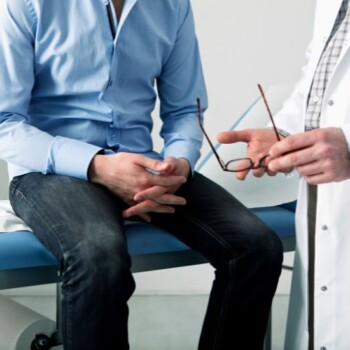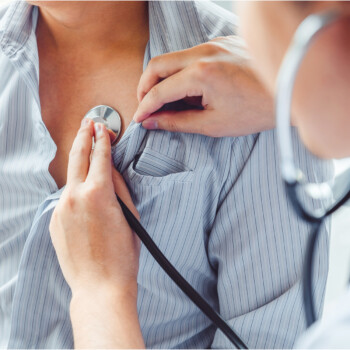Article Summary
Erectile dysfunction, affecting millions of men, can stem from various causes, including health conditions, lifestyle factors, or age-related changes. While oral treatments like Viagra work for some, custom compounded medications, such as injectables or orally disintegrating tablets, offer alternative solutions with fewer side effects and effective results.It’s estimated that erectile dysfunction (ED) affects more than 18 million men in the United States alone.[1] The majority of those men are over 40 years old, but it can strike no matter what your age. Sometimes ED is an unfortunate side effect of a disease. For instance, men who have diabetes, decreased testosterone levels, high blood pressure, an enlarged prostate, or some other health conditions may get ED. Often after prostate surgery men experience ED due to nerve damage or other trauma to the male body.[2] Sometimes smoking, alcohol use, or certain medications can all cause ED. It can even be the result of everyday pressures such as stress, anxiety, or just nervousness.[3] Fortunately, no matter what the cause, Erectile Dysfunction can be successfully treated.[4]
While some men respond well to oral ED treatments such as Viagra or Cialis, others do not respond to these treatments or have uncomfortable or even dangerous side effects from these medications.[5] In those cases, custom compounded medications can often be used successfully to treat ED.[6]
The injectable medications Papaverine, Phentolamine, Alprostadil (Prostaglandin E1), and/or Atropine are used individually or in combination. While an injectable ED medication may sound intimidating or even painful, the truth is, that the treatment involves very little discomfort and is an easy and very effective way to treat ED.[7]
PDE5i Orally Disintegrating Tablets (ODT)
An orally disintegrating tablet or orally dissolving tablet (ODT) differ from traditional tablets in that they are designed to be dissolved on the tongue rather than swallowed whole. An ODT is a solid dosage form that disintegrates and dissolves in the mouth (either on or beneath the tongue or in the buccal cavity) without water within 60 seconds or less.
Orally disintegrating tablets offer many of the advantages of solid and liquid dosage forms offer. ODTs present no risk of obstruction of the gastrointestinal tract, which is beneficial for patients who do not have access to water such as patients who are traveling. The rapid disintegration of the resulting tablets may result in a quick dissolution of the drug and fast absorption that can provide a rapid onset of action.[8] The bioavailability of drugs that are absorbed in the mouth, pharynx, and esophagus may be increased.[9] Absorption of drugs before reaching the stomach avoids hepatic metabolism, which can reduce the dose and may increase the bioavailability of the drug.[10] ODTs may have a faster onset of action and higher bioavailability occur via blood vessels under the tongue, rather than being absorbed through the digestive tract. Fast-acting dissolution provides dispersion before being swallowed, which may provide faster metabolism. ODTs may allow some of the active ingredient to be absorbed directly into the blood stream bypassing the patient’s hepatic system and first-pass metabolism.
Injectable ED Medications
Papaverine is particularly known as a smooth muscle relaxant and vasodilator. Its principle pharmacological action is as a non-specific vasdilator of the arterioles and capillaries.[11] Major side-effects include priapism and corporal fibrosis. These side-effects are greatly reduced when papaverine is used in very low dosages and combined with phentolamine and alprostadil.
Phentolamine may provoke a reflex, increasing sympathetic outflow and the release of norepinephrine.[12] When phentolamine is used for the treatment of ED, it is often used in combination with other agents (e.g. papaverine) to enhance its efficacy. The combination of phentolamine and papaverine for the treatment of ED has been studied extensively.[13][14] This combination can be efficacious and may induce erections sufficient for sexual intercourse in over 90% of cases.[15]
Prostaglandin E1 (Alprostadil) binds with PGE receptors, and the resultant relaxation response in the smooth muscle is mediated by cAMP.[16] Little is known about the pharmacokinetics of PGE1 but it is believed that as much as 80% may be metabolized in one pass through the lungs.[17] In all probability, this rapid degradation by the lungs accounts for its lack of any significant cardiovascular system side-effects when administered intracavernosally.[18] It can also be metabolized in the penis.[17] Alprostadil has also been used in combination with other agents, such as papaverine, and the combination was superior to only alprostadil.[19][20] Alprostadil is available as an intraurethral pellet (MUSE), intraurethral gel with penetration enhancers, or intracavernosal injection.[21][22] Numerous studies show that the injection is more efficacious.[23]
Atropine is a non-selective muscarine agonist that functions by competitively binding to muscarine receptors, a class of acetylcholine receptor involved in the contraction and relaxation of smooth muscle and epithelial tissue throughout various parts of the body.[24] These receptors, when activated locally in the penis by acetylcholine molecules, cause the corpus cavernosum to contract by inhibiting the absorption of acetylcholine by these receptors into cells in the vasculature of the penis, Atropine effectively relaxes the vessels in the penis and helps in achieving erection.[25][26] While atropine’s efficacy when used alone is relatively insignificant and it’s use in combination with other injectables does not improve the success rates of a mixture without atropine, it can help reduce the pain PGE1 can cause.[26][27]
Intracavernosal Compounds
- Bi-Mix: A combination of Papaverine & Phentolamine
- Super Bi-Mix: A highly concentrated version of the standard Bi-Mix Injection
- Tri-Mix: A combination of Papaverine, Phentolamine & Prostaglandin E1
- Super Tri-Mix: A highly concentrated version of the standard Tri-Mix Injection
- Quad-Mix: A combination of Papaverine, Phentolamine, Prostaglandin E1 & Atropine
- Super Quad-Mix: A highly concentrated version of the standard Quad-Mix Injection
- Johns Hopkins. Bloomberg School of Public Health. 18 Million Men in the United States Affected by Erectile Dysfunction. N.p., 1 Feb. 2007. Web.
- UCLA. Department of Urology. Dealing with Erectile Dysfunction During and After Prostate Cancer Treatment. 10 Jun. 2009.
- Shamloul R, Ghanem H. Erectile dysfunction. Lancet 2013;381:153-65.
- Montague DK, Jarow JP, Broderick GA, et al. Chapter 1: The management of erectile dysfunction: an AUA update. J Urol 2005;174:230-9.
- Sadeghi-Nejad H, Lim H, Long K, Gilhooly P. Assessment of the efficacy of Viagra (sildenafil citrate) using the Erectile Dysfunction Inventory of Treatment Satisfaction (EDITS). Urol Int. 2003;71(1):100-2.
- McCullough AR, Barada JH, Fawzy A, Guay AT, Hatzichristou D. Achieving treatment optimization with sildenafil citrate (Viagra) in patients with erectile dysfunction. Urology. 2002 Sep;60(2 Suppl 2):28-38.
- Baniel J, Isarailov S, Engelstein D, Shmueli J, Segenreich E, Livne PM. Three-year outcome of a progressive treatment program for erectile dysfunction with intracavernous injections of vasoactive drugs. Urology 2000 Oct 1;56(4):647-52
- Behnke, K et al. Journal of Clinical Psychopharmacology: August 2003 – Volume 23 – Issue 4 – p 358-364.
- Jaccard T, Leyder J. Une nouvelle forme galenique le lyoc. Ann pharm fr. 1985; 43:123-31.
- Clarke A, brewer F, Johnson ES, Mallard N, Hartig F, Taylor S. A new formulation of selegiline: improved bioavailability and selectivity for mao-b inhibition. J neural transm 2003; 110:124-5.
- Leungwattanakij S, Flynn V, Hellstrom WJG. Intracavernosal injection and intraurethral therapy for erectile dysfunction. Urol Clin North Am 2001;28:343-354.
- Robertson D, Biaggioni I. Chapter 10. Adrenoceptor Antagonist Drugs. In: Katzung BG, Masters SB, Trevor AJ, eds. Basic & Clinical Pharmacology. 12nd ed. New York: McGraw-Hill; 2012. wwwaccesspharmacycom. Accessed December 5, 2012.
- Shamloul R, El-Dakhly M. Intravavernous Chlorpromazine Versus Phentolamine: A Double-blind clinical coparative Study. Sexual Medicine 2004 Nov;1(3):310-313
- Shamloul R, Atteya A. Intravavernous soium Nitroprusside (SNP) versus Papaverine/Phentolamine n Erectile Dysfunction: A Comparative Study of Short-Term Efficacy and Side-Effects. Sexual Medicine 2005Jan;2(1):117-120
- Shamloul R, Atteya A. Intracavernous soium Nitroprusside (SNP) versus Papaverine/Phentolamine n Erectile Dysfunction: A Comparative Study of Short-Term Efficacy and Side-Effects. Sexual Medicine 2005Jan;2(1):117-120
- Prostin VR Pediatric® (alprostadil injection) package insert. Kalamazoo, MI: Pharmacia and Upjohn Company.; 2006 Apr.
- Hamberg M, Samuelsson B. On the metabolism of prostaglandin E1 and E2 in man. J Biol Chem 1971;246(22):6713-21.
- Buck, Marcia L. Alprostadil (PGE1) for Maintaining Ductal Patency. Pediatric Pharmacotherapy. 2000;6(9)
- Bachara A, Casabe A, Cheliz G, Romano S, Rev H, Fredotovich N. Comparative study of papaverine plus phentolamine versus prostaglandin E1 in erectile dysfunction. Urology. 1997 Jun;157(6):2132-4.
- Floth A, Schramek P. Intravavernous injection ofp prostaglandin E! in combination with papaverine: enhanced effectiveness in comparison with papaverine plus phentolamine and prostaglandin E1 alone. Urology. 1991 Jan;145(1):56-9.
- Guay AT, Perez JB, Velasquez E, Newton RA, Jacobson JP. Clinical experience with intraurethral alprostadil (MUSE) in the treatment of men with erectile dysfunction. A restrospective study. Medicated urethral system for erection. European Urology. 2000 Dec;38(6):671-6
- Goldstein I, Pavton TR, Schechter PJ. A double-blind, placebo-controlled, efficacy and safety study of topical gel formulation of 1% alprostadil (Topiglan) for the in-office treatment of erectile dysfunction. Urology. 2001 Feb;57(2):301-5
- Linet OI, Ogrinc FG. Efficacy and safety of intracavernosal alprostadil in men with erectile dysfunction. The Alprostadil Study Group. New England Journal of Medicine. 1996 Apr 4;334(14):873-7
- Rang HP, Dale MM, Ritter JM, Flower RJ. “Ch. 10”. Rang and dale’s pharmacology. Elsevier Churchill Livingstone, 2007. p. 153.
- Senbel AM, Hashad A, Sharabi FM, Daabees TT. “Activation of muscarine receptors inhibits neruogenic nitric oxide in the corpus cavernosum.” Pharmacological Research 2012 Mar;65(3):303-11.
- Sogan PR, Teloken C, Souto CA. “Atropine role in the pahrmacological erection test: study of 228 patients. Journal of Urology 1997 Nov;158(5):1760-3
- Kunelius P, Lukkarinen O. Intracavernous self-injection of prostaglandin E1 in the treatment of erectile dysfunction. International Journal of Impotence Research. 1999 Feb;11(1):21-4




